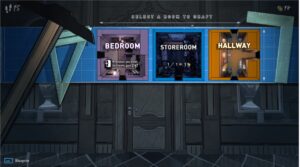Solving problems through games is being harnessed more and more as a crowdsourcing tool to solve real-world problems by tapping into the vast, diverse, and skilled global gaming community. Through gamifying problem solving, by embedding real scientific or societal challenges into engaging gameplay, developers leverage players’ problem-solving abilities, creativity, and persistence to generate data, insights, and solutions that might otherwise take years or vast resources to achieve. This approach transforms gamers into willing (or maybe even unwitting) contributors to fields like medicine, astronomy, and environmental science, often with surprising efficiency.
Different People, a Different Mindset
Research indicates a positive relationship between playing video games and enhanced creativity. Engaging in gameplay can induce a state of deep focus and immersion, often referred to as “flow,” where individuals become fully absorbed in the activity. The “flow” state may temporarily suspend cognitive biases and ingrained assumptions that individuals often bring to formal research settings. This altered state of mind can thus potentially lower inhibitions and foster a more exploratory and creative approach to solving problems through games.
Also, traditional research often follows strict methodologies and protocols that may sometimes constrain the exploration of unconventional ideas. The more flexible and playful environments of gamifying problem solving might encourage participants to think in less conventional ways, and approach problems from diverse perspectives. The interactive and challenging nature of games can stimulate the generation of novel solutions.
Plus, of course, there are the simple benefits of having many more people, from more diverse backgrounds, making contributions to gamified research. With over three billion gamers globally, the potential ‘research workforce’ that can be encouraged to take part is massive compared to traditional research’s limited personnel. Gamifying problem solving enables parallel processing by thousands of players which compresses timelines dramatically, while devices including rewards, leaderboards, and narratives keep players invested – unlike dry repetition of lab tasks.
A 2025 Game Example
After almost a decade in development, Blue Prince was released in April 2025 by Dogubomb Studios. It is its first game. Forbes swiftly reported that it has been hailed as the year’s best-reviewed game so far.

Image source: Dogubomb Inc.
The real-world issues it addresses are urban planning and systemic thinking. The game mirrors real-world spatial optimization (e.g. city layouts and resource allocation) by challenging players to navigate complex, adaptive systems—a metaphor for policy or infrastructure design.
The actual game mechanics are a roguelike puzzle adventure set in a shape-shifting mansion. Players solve interlocking spatial and logical puzzles to unlock rooms, with each run revealing new patterns. It’s single-player but has online leaderboards for solution-sharing.
While not explicitly scientific, its puzzles train cognitive skills for systemic problem-solving, akin to urban planning challenges. In 2025, architecture schools, including MIT Media Lab, began using Blue Prince to teach students about adaptive design, claimed X posts from @DogubombStudios. The game’s open-ended nature sparks discussions on efficient systems.
Sectors Where Games Outperform Traditional Research Methods
Solving problems through games cannot universally replace traditional research, it is not a ‘silver bullet’ solution, and success requires thoughtful design and a clear understanding of user motivations and goals. However, gamifying problem solving does excel in specific areas where human intuition, scale, or speed gives it an edge. Here are four sectors where they’re proving superior, with a reminder of some iconic platforms that have been instrumental in developing breakthroughs.
Biomedical Research (Protein Folding and Genomics)
Gamers’ ability to spot patterns and experiment with unconventional approaches often outpaces rigid algorithms or slow, expert-driven lab work. In Foldit, players find solutions that elude automated tools.
The AIDS enzyme solution in Foldit shows how human creativity can crack problems that stump computational models. In 2011, players solved the structure of an AIDS-related enzyme in three weeks—a challenge that had eluded specialist scientists for over a decade. The game’s intuitive interface allows non-experts to explore solutions that algorithms or trained researchers might miss.

Professor David Baker. Image source: University of Washington
Computational biologist David Baker, professor of biochemistry at the University of Washington School of Medicine and director of the UW Medicine Institute for Protein Design, was awarded the 2024 Nobel Prize in Chemistry for computational protein design. He is also known for collaborating on the development of Foldit, and Foldit players have been named as co-authors in some of Baker’s published work.
The Borderlands Science game processes DNA data at a scale and speed unattainable by small research teams. It presents users with simple block puzzles based on strands of DNA, and by solving them they help to map and compare the microbes that are contained within the strands. It tasks players with aligning DNA sequences to refine microbial data. This approach through gamifying problem solving has processed massive datasets faster than traditional methods, proving that shooter fans can double as genetic researchers.
Astronomy (Data Classification)
Traditional astronomy relies on limited expert hours to sift through vast datasets. Games like Project Discovery distribute this workload across thousands of players, accelerating discovery. Players’ crowdsourced collective effort has identified exoplanet candidates faster than lone researchers could.
EVE Online players, through its Project Discovery, have classified real telescope data to identify exoplanets and analysed cell images for medical research, including immune responses. Since 2016, this initiative has turned a space MMO into a hub for citizen science, with players contributing thousands of hours of analysis while earning in-game rewards. EVE players’ exoplanet classifications rivalled professional outputs in accuracy and volume.
Neuroscience and Behavioural Studies (Spatial Navigation)
The mobile game Sea Hero Quest, released in 2016 by Deutsche Telekom, gamified problem solving by collecting spatial navigation data as players sail virtual seas. Gathering real-time, large-scale human behaviour data—millions of players versus small lab cohorts—has helped researchers understand how the brain orients itself. This is a key factor in studying Alzheimer’s and gaining richer insights into dementia generally.
Two minutes of crowdsourced gameplay generates the equivalent of five hours of lab-based research. By just 2018 the game’s 4.3 million players had generated data equivalent to centuries of traditional research, a true breakthrough.
In 2025, the game is no longer available. Researchers can now utilise the game’s password-accessed Research Edition for studies focused on spatial navigation and cognitive decline.
Complex Problem Solving (Interdisciplinary Challenges)
Through gamifying problem solving, gamers excel at tackling multifaceted puzzles requiring lateral thinking—skills honed in strategy or sandbox games. Traditional methods, often siloed by discipline, can miss holistic solutions.
Not so the Minecraft urban planning game, which has been used to crowdsource ideas for urban design and ecosystem modelling. Players build sustainable cities or simulate environmental scenarios, offering creative solutions that planners can adapt. It integrates aesthetics, functionality, and sustainability in ways expert-only teams might overlook. Since 2021, the UN’s Block by Block initiative has used Minecraft to redesign real public spaces.
Community-driven designs in Minecraft have inspired other real-world architecture with fresh perspectives. At a professional level, digital twinning, the creation of online versions of urban designs, is proving vital to design and build urban neighbourhoods and structures, with crowd input, to cope better with extreme weather attributed to climate change.
Solving Problems Through Games Launched in 2020s
Against the Storm (2023)
While primarily an entertainment game, Against the Storm incorporates modern urban planning strategies within a challenging fantasy setting. Players manage a settlement inhabited by various anthropomorphic creatures, facing environmental threats and the demands of a ruling queen.
Success requires careful balancing of resource management, the needs and happiness of the diverse population, and strategic planning to expand and thrive in a hostile environment.
Although not directly crowdsourcing solutions to real-world urban planning problems, the game indirectly exposes players to the complexities of urban development, resource allocation, and the consequences of different decisions in a city-building context. Even entertainment-focused city-building games like Against the Storm can implicitly educate players about the challenges and trade-offs involved in urban planning and resource management.
Spritacular (Launched in 2022)

A Spiritacular image uploaded from Côte d’Azur, France. Image source: Spiritacular Gallery
This citizen science project with a quiz element aims to collect observations of sprites and other Transient Luminous Events (TLEs), which are optical phenomena occurring above thunderstorms. Over the last two decades, good quality cameras have become increasingly affordable which allows more people than ever before to have access to the tools capable of documenting these powerful atmospheric events.
The project provides a platform where participants, often storm chasers and enthusiasts, can upload images of these rare atmospheric events. Other participants can then contribute by helping to verify the submitted images through a quiz designed to assess the validity of the observations. By collecting a significant number of ground-based observations, Spritacular aims to build a comprehensive database of TLEs, which will serve as an invaluable resource for researchers studying atmospheric and space electricity.
Spritacular showcases how citizen science initiatives can solve problems through games by effectively leveraging the enthusiasm and skills of niche communities, such as storm chasers, to gather unique and valuable scientific data that would be challenging to obtain through traditional research methods alone.
Plasticity (2020)
This puzzle-platformer game was created to raise awareness about the critical issue of plastic pollution and its devastating impact on the environment. Players navigate a world overwhelmed by plastic waste, assuming the role of a character named Noa in the year 2140.
As players progress through environments choked with plastic, their decisions directly influence the story, the gameplay, and the environment itself. By playing through the game and witnessing the stark reality of a future dominated by plastic pollution, players are encouraged to reflect on their own consumption habits and the broader implications of waste management.
The dystopian setting and narrative of Plasticity create a powerful emotional connection with the issue of plastic pollution, potentially leading to increased awareness and a desire for change in players’ real-world behaviour. The game’s visual representation of environmental neglect, coupled with the protagonist’s journey, can evoke a strong sense of urgency and responsibility.
Alba: A Wildlife Adventure (2020)
This game focuses on promoting wildlife conservation and environmental care by highlighting the positive impact of even small actions. Players explore a Mediterranean island as Alba, a young girl visiting her grandparents, and engage in activities such as identifying and photographing the local wildlife, rescuing animals in danger, and cleaning up litter.
By actively participating in conservation efforts within the game, players learn about local ecosystems and the importance of protecting them. Notably, for every copy of the game sold or downloaded, the developers partner with a reforestation charity to plant a tree in the real world.
Alba: A Wildlife Adventure successfully gamifies problem solving by connecting in-game actions with tangible real-world conservation efforts through its tree-planting initiative, fostering a direct sense of impact for players. This initiative provides a concrete and measurable way for players to contribute to environmental conservation, reinforcing the game’s message.
SIM-PHL (Launched in 2021)
This urban planning simulation game was developed by Drexel University to help the public understand the political, economic, and sociological forces that shape urban communities, using open data from the city of Philadelphia.
Set in Philadelphia’s Mantua neighbourhood, the game is designed in the style of SimCity, where players take on the role of city managers. They make decisions about various aspects of urban development, including zoning, housing, and infrastructure, based on real-world data such as property values, incident reports, and zoning maps. By experimenting with different urban development strategies within the game, players can gain a better understanding of the impact of various policies on factors like rental rates, crime, and gentrification, potentially leading to more informed civic engagement in their own communities.
SIM-PHL exemplifies solving problems through games by making complex urban planning data accessible and engaging to the public, fostering a deeper understanding of the forces shaping their communities and potentially increasing civic participation.
Limits and Caveats of Solving Problems Through Games
Solving problems through games designed to discover solutions to global challenges isn’t a silver bullet. Gamifying problem solving is less effective in areas requiring deep theoretical expertise (e.g., quantum physics) or where precision trumps intuition. Data quality can also vary, requiring validation by experts. Nevertheless, in sectors needing pattern recognition, big data processing, or creative input, gamers are proving to be a disruptive force—turning joysticks into tools for progress.
Unlock the Power of Crowdsourcing and Innovation
Welcome to Crowdsourcing Week – the global platform that connects innovators and visionaries with the power of crowdsourcing. Discover how we can help you drive innovation and achieve your goals.
We work with crowd-related platforms and brands to increase qualified leads and deliver content with high levels of expertise, authority and trustworthiness.
Roundtables, by invite only, bring together industry leaders, experts, and innovators for engaging discussions, knowledge sharing, and collaborative problem-solving in cities around the world.
Learn more about our digital marketing services.




0 Comments